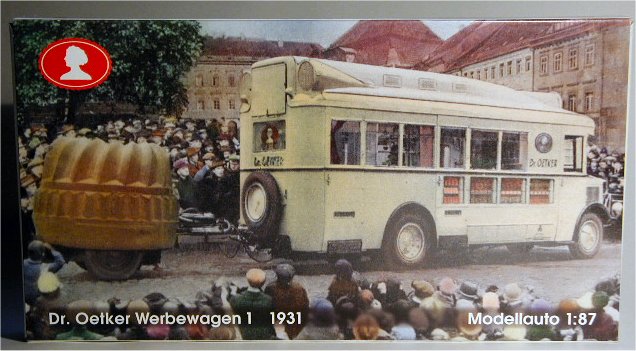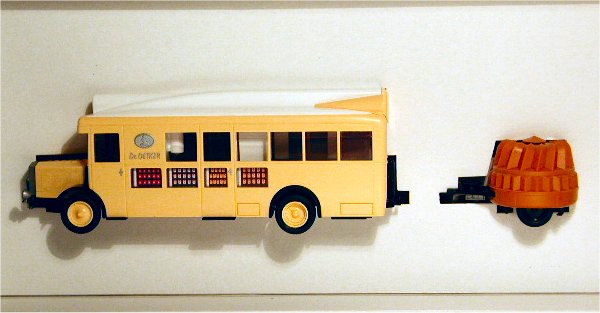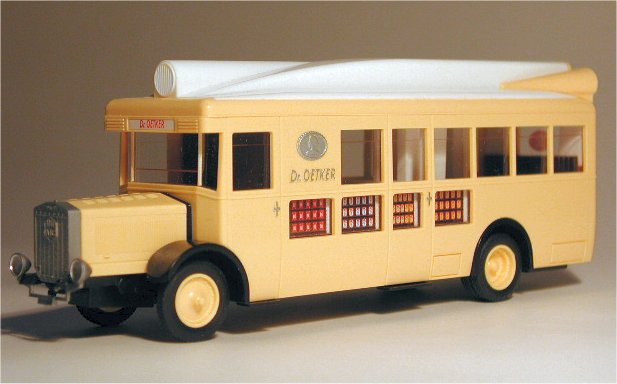On-line since 2002
> 600
pages
> 1150 manufacturers
> 11000
pictures
> 1.000.000 unique visitors
87thScale.info does not
spam. If you received a
spam message with an 87thScale return mail
address it is forged.
Model vs Prototype #5
Epoche NAG K09/4

In the 1920s and 30s, most people only knew the shop where they did their shopping, and were not aware who the actual manufacturer of many products was. Products like flour and sugar were not even packed in individual packaging as they are nowadays but they were packed at the time they were sold in blank bags and boxes that were supplied by the shopkeeper or even brought by the buyer. To increase brand-awareness, the manufacturers realized that they had to advertize, which they did by using their delivery trucks as billboards at first. The next step was to use custom built cars, trucks and buses that could be used to attract attention, like cars with a bottle-shaped bodywork for instance. Later on, the manufacturers ordered trucks and buses that could be used for show and demonstration purposes. The Epoche model of a NAG K09/4 which was used by 'Dr. Oetker' is the 1/87 replica of one of these vehicles.

The NAG model tested here is a model of the first
demonstration vehicle 'Dr. Oetker' used. It was built in 1931 by Gaubschat of
Berlin on a NAG chassis that had a 100hp petrol engine. The prototype featured a
complete Siemens kitchen with ovens, hot and cold water supply and a
filmprojector (all inside) plus a moviescreen and speakers and several showcases
(outside). All this equipment needed to be powered ofcourse and this was done by
means of a 10kW generator that was carried along in the trailer which was also
built by Gaubschat. ()

The model itself is a real piece of craftsmanship, and not just on the outside, where it has excellent engraving. Epoche didn't cut down on details on the inside of the model either. all the interior details that can be found on the prototype are there, the kitchen appliances, the ovens, the sink and even the showcases and the benches.

The 87thScale.info verdict:
Positive: the overall quality of the
model is very good, the engraving is excellent, the model has rubber tires with
profile, a detailed chassis and the prints are sharp. Epoche has had the guts to
create a model that can hardly be issued in other versions which would probably
have made it more difficult to recover the expenses made to make the moulds.
Fortunately, 'Dr. Oetker' ordered the model from Epoche, which should already
have covered the greater part of the expenses. Even when we take that into
account, Epoche's decision to build this model is a courageous one.
Remark: The model is only available from 'Dr.
Oetker' directly at the moment.
Test #5
information: Jahrbuch Lastwagen 2002 by Bernd Regenberg / © 2001 Podszun
Verlag.

